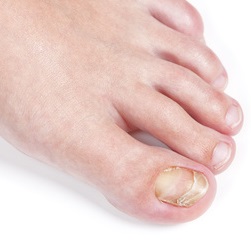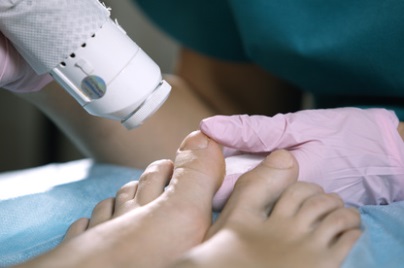
Laser nail fungus removal is an alternative to topical medications and prescription antifungal drugs. It’s a relatively new treatment option, approved for use in the United States for the treatment of fungal infections of the fingernails and toenails by the Food and Drug Administration in 2010. We’ll try to give you all the info you need about laser treatments for nail fungus in this article but if you have additional questions, feel free to email us and we’ll do our best to get you the information you need.
How Does Laser Nail Fungus Removal Work?
Laser nail fungus treatment works by using lasers to selectively heat and destroy the fungus while not harming healthy tissue surrounding the affected area. The idea is appealing to many people who wish to avoid lengthy treatment with topical antifungal medications, which can take up to a year to cure fungal infection of the nails, and who also wish to avoid the potentially serious side effects of oral antifungal drugs, which can include liver damage. If nail fungus could be removed in just one or two sessions of laser treatment, that would be a lot safer and more convenient than other treatment options.
Is Laser Nail Fungus Treatment Effective?
So does it work? Unfortunately, studies have produced mixed results, some showing laser treatment for nail fungus works sometimes (in about 33 percent of cases) and some showing it seldom or never works. It might work in your case, but the odds are not on your side. If you’re interested in treating nail fungus with laser therapy, we recommend seeing a dermatologist with experience treating nail fungus with lasers. Be sure to ask about his or her rate of success with the procedure before deciding to proceed. We recommend asking about other treatment options, as well.

What Are The Downsides of Laser Treatment For Nail Fungus?
In addition to the fact that laser treatment for nail fungus often doesn’t work, it’s expensive and it’s usually not covered by health insurance, according to an article in the March 14, 2014 issue of the New York Times(1). It can cost as much as $1,000 for one laser treatment and several treatments may be recommended. That’s a lot to pay out of pocket for something that very well may not work. Check with your health insurance company to find out if the procedure is covered by your insurance policy. If it is, make sure you find out how many treatments will be covered, because frequently more than one is required.
Alternatives to Laser Nail Fungus Removal
So if laser nail fungus removal doesn’t work, or if you and your doctor decide it’s not a good option for you, what will cure your fungal infection? Well, there are prescription antifungal drugs you can take by mouth. They aren’t safe for everyone and you should discuss the risks and benefits with your doctor, especially if you have heart or liver problems. These medications work well for many people, though. There are also medications you apply directly to the infected nails. These are often effective, though they might not work for really severe infections. Surgical removal of the nail is another option, although that is often followed by either topical medications applied to the nail bed or oral antifungal drugs, because often the nail bed or skin beneath the nail is also infected, not just the nail. Talk with your doctor if you have questions about the best nail fungus treatment for you.
Our Preferred Treatment For Nail Fungus
Our preferred treatment for nail fungus is both much more affordable and much more effective than laser therapy. It’s a topical medication called Funginix, available without a prescription. Funginix contains a number of antifungal ingredients, including natural ingredients like tea tree oil, which all work together to fight nail fungus and restore nails to health. To learn more about why we recommend Funginix, just follow the link.
